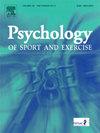更活跃,更亲近自然?体育活动对亲环境行为的携带效应
IF 3.1
2区 心理学
Q2 HOSPITALITY, LEISURE, SPORT & TOURISM
引用次数: 0
摘要
携带效应描述了一种行为,如身体活动(PA),如何通过心理机制和资源转移影响另一种行为,如亲环境行为(PEB)。三项研究考察了主动行为和主动行为之间的潜在结转效应及其机制,检验了心理机制是否将这两种行为联系起来,并使资源得以转移。研究1采用中国综合社会调查(n = 9,960),发现PAB与PEB之间存在显著的正相关关系,为两者之间的相互关系提供了初步证据。在预注册的研究2中,n = 228名大学生被测试两次,间隔一个月,以检验从PA到PEB的纵向结转效应。结果表明,结转效应是通过PA意向- PA计划-亲环境意向- PEB的中介链发生的。研究3采用2(组:计划干预组vs.主动对照组)× 3(时间:基线vs.测试后vs.随访)预注册随机对照试验,共70名大学生。结果显示,从基线到测试后,所有因变量都增加了时间效应,但时间和组之间没有交互效应。然而,我们发现亲环境意愿的改变在体育活动计划的改变和PEB的改变之间具有显著的中介作用(B = 0.17, 95% CI[0.05, 0.30])。总体而言,这些研究结果表明,计划PA可以促进PEB,支持假设的心理机制。然而,由于研究3的实验结果没有明显的相互作用效应,需要进一步探索。本文章由计算机程序翻译,如有差异,请以英文原文为准。
More active, more nature-connected? The carry-over effect of physical activity in pro-environmental behavior
Carry-over effects describe how one behavior, such as physical activity (PA), can influence another, like pro-environmental behavior (PEB), through psychological mechanisms and the transfer of resources. Three studies have examined the potential carry-over effect and its mechanism between PA and PEB, testing whether psychological mechanisms link the two behaviors and enable the transfer of resources. Study 1 used the China General Social Survey (n = 9,960) and found a significant positive correlation between PAB and PEB, providing preliminary evidence for their interrelation. In pre-registered Study 2, n = 228 college students were examined twice, one month apart, to test the longitudinal carry-over effect from PA to PEB. The results showed that the carry-over effect occurred through a mediating chain of PA intention – PA plans – pro-environmental intention – PEB. In Study 3, a 2 (group: planning intervention group vs. active control group) × 3 (time: baseline vs. post-test vs. follow-up) pre-registered randomized controlled trial was conducted among n = 70 college students. Results showed a time effect with an increase in all dependent variables from baseline to post-test but no interaction effect between time and group. However, we found a significant mediating effect of change in pro-environmental intention between changes in physical activity planning and change in PEB (B = 0.17, 95 % CI [0.05, 0.30]). Overall, the results of these studies demonstrate that planning PA can promote PEB, supporting the hypothesized psychological mechanisms. However, the experimental results from Study 3 require further exploration owing to the absence of a significant interaction effect.
求助全文
通过发布文献求助,成功后即可免费获取论文全文。
去求助
来源期刊
CiteScore
6.40
自引率
5.90%
发文量
172
审稿时长
69 days
期刊介绍:
Psychology of Sport and Exercise is an international forum for scholarly reports in the psychology of sport and exercise, broadly defined. The journal is open to the use of diverse methodological approaches. Manuscripts that will be considered for publication will present results from high quality empirical research, systematic reviews, meta-analyses, commentaries concerning already published PSE papers or topics of general interest for PSE readers, protocol papers for trials, and reports of professional practice (which will need to demonstrate academic rigour and go beyond mere description). The CONSORT guidelines consort-statement need to be followed for protocol papers for trials; authors should present a flow diagramme and attach with their cover letter the CONSORT checklist. For meta-analysis, the PRISMA prisma-statement guidelines should be followed; authors should present a flow diagramme and attach with their cover letter the PRISMA checklist. For systematic reviews it is recommended that the PRISMA guidelines are followed, although it is not compulsory. Authors interested in submitting replications of published studies need to contact the Editors-in-Chief before they start their replication. We are not interested in manuscripts that aim to test the psychometric properties of an existing scale from English to another language, unless new validation methods are used which address previously unanswered research questions.

 求助内容:
求助内容: 应助结果提醒方式:
应助结果提醒方式:


